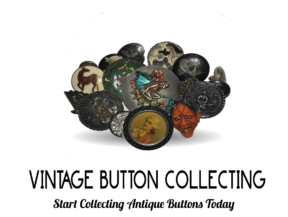
Antique Celluloid Buttons: Two Types of Collectors’ Items
There are two types of antique celluloid buttons popular with collectors and hobbyists. Though both types of antique celluloid buttons originated with the invention of celluloid in 1868, they are distinctly different in purpose and collectors should be aware of the different types of antique celluloid buttons when they are performing internet searches or inquiring with other collectors and sellers to make sure they are getting exactly what they are looking for.
The first kind of antique celluloid buttons are the ones used as a decorative fasteners on clothing or home décor items. Celluloid is considered by some to be the first plastic ever invented, although bakelite, celluloid’s successor, actually holds that title. Celluloid is not a true plastic because it is formed of a mixture of both synthetic and organic materials, whereas bakelite is completely synthetic.
Antique celluloid buttons from apparel and home décor pieces can be quite fragile precisely because celluloid does contain organic materials, which degrade over time. The celluloid can “crystallize”, which causes the antique celluloid buttons to harden and finally crumble. It is best to store your antique celluloid buttons in a cool, dry place, away from all metals, heat and humidity. However, do not store them in airtight containers, as the celluloid needs to “breathe.”
The other type of antique celluloid buttons are the promotional pin buttons that people pinned to their clothing to communicate messages or show they were part of a group or movement. These antique celluloid buttons were most popular in political campaigns, and are widely considered to be the most interesting and most valuable of all political memorabilia. They first appeared in the 1896 US Presidential Election. The “golden age” for antique celluloid buttons related to politics is the period between 1896, when they first appeared, and the mid 1920s. Collectors term this time in history the “classic period” for antique celluloid buttons.
The antique celluloid buttons that are considered to be valuable political memorabilia and collector’s items should not be confused with the modern lithographic buttons. Although antique lithographic buttons are also collectibles and also have a following, antique celluloid buttons are deemed to be generally superior in quality and therefore more coveted by collectors.
Good sources for information, trading, buying and selling antique celluloid buttons are antique shows, flea markets and on-line auction sites like eBay. However, if you’ve just stumbled upon a box of antique celluloid buttons in your grandmother’s attic, before you run off to sell them, make sure you know what they are really worth. Do your research so you know you are getting fair market value for your antique celluloid buttons before you sell them. You can take them to a professional appraiser, or even check out price guides in your local library for more information.












